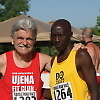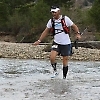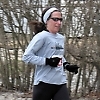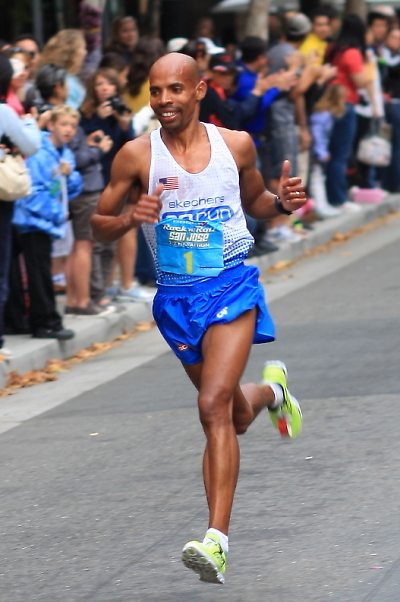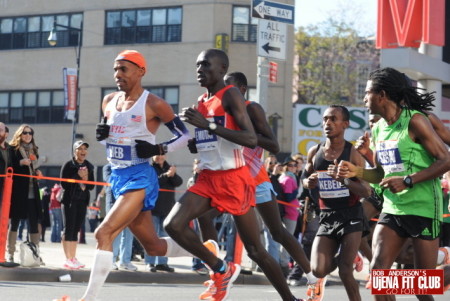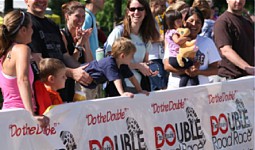UjENA FIT Club Running Interviews and articles with 100 Interesting People
Best Road Races and the UjENA FIT Club is speaking with 100 people who we feel have a lot to say about running, racing and fitness We will give you background information as will as their insights into the future. Be sure to post your feedback and comments.
Read All UjENA FIT Club Running Interviews
Posted Thursday, February 19th, 2015
by Bob Anderson, publisher of Double Runner magazine (Photo Bob Anderson with world record holder Julius Koskei wearing the yellow... Read Interview
Posted Monday, March 17th, 2014
The Chris Jones story is a running saga of epic proportions. Don't try this at home! (Photo - Leadville 100... Read Interview
Posted Sunday, March 23rd, 2014
Aging ever so gracefully at age 59 and forging a career record that becomes ever more impressive, Sharon Vos is... Read Interview
Posted Tuesday, November 5th, 2013
By David Prokop Editor Best Road RacesJulius Koskei (pronounced Kos-kay), who set the current world record in the Double Road... Read Interview
Meb Keflezighi - Interview No. 3
Thursday, January 12th, 2012
Meb Talks About Trials Three Days Out
Meb Keflezighi, 36, took home the marathon’s silver at the 2004 Olympics. In 2009 he surprised many by winning the ING New York City Marathon. More recently, he won his age group at the San Jose Half Marathon and will be competing at his third Olympic Trials January 14, 2012. Meb lives with his wife Yordanos and their three children in Mammoth Lakes, CA. For more on this great athlete, check out his book, Run to Overcome. (Interview by Laura Dayton) Photo: Meb at the four mile mark of the San Jose Half Marathon 2011 which he won, photo by Catherine Cross Ujena Fit Club
1. In your book Run to Overcome, you describe coming to America with a multitude of disadvantages, including the fact you didn’t speak English. Can you tell us a little more about that period? I was born in Eritrea in East Africa and, after a brief stay in Italy, immigrated with my family to the United States at the age of 12 in 1987. Growing up without electricity or running water in rural African village, I didn’t see television until we moved to Italy when I was 10. I was so naïve that I thought real people were inside the TV set. We came to the U.S. with virtually nothing but the clothes on our backs and the faith that we were in the Land of Opportunity. My parents are role models in overcoming adversity. My parents always told us to focus on our education, because that is something no one can take away from you. 2. Your story is truly remarkable, almost hard to believe. Ha, ha, that’s not the first time I’ve heard that. When we started school in the U.S. there was only one grade we could bring home, and that was an A. In Eritrea, even when I was lucky enough to attend school, I never owned a textbook. Now all my siblings of college age have graduated from or are attending U.S. universities. We practiced the language before and after school. I went from being barefoot in Eritrea to now having a contract with Skechers and I own enough running shoes to open a small store! Photo: Leading the 2009 San Jose Half Marathon - he went on to finish first. (Photo by Catherine Cross UjENA FIT Club) 3. If you wouldn’t mind sharing, as an Olympic medalist, what kind of value do you receive from a sponsorship like Sketchers or Nike? After 13 years as a Nike sponsored athlete, I am now with Skechers. Skechers sees me as an ambassador to the running community. They are making a serious commitment to becoming a athletic shoes brand and I am a part of that campaign. Skechers has been a great partner to work with. Their mid-foot technology has been a great asset in my training and proven results with my personal best time in the New York City Marathon. In addition to Skechers, I also serve as a brand ambassador for Generation UCAN and Sony Walkman. Organizations like the NYRR have provided with a great amount of support throughout my career…even before I medaled.
Comments and Feedback
 Great story. Loved the bit about real people being inside TV's. Good luck on Saturday. We'll be watching! Great story. Loved the bit about real people being inside TV's. Good luck on Saturday. We'll be watching!Justin Wall 1/12/12 3:41 pm |
,,,,, | 4. You say in your book you were “born to run.” When did you first make this discovery? My running journey began with a timed mile in my seventh grade physical education class. I got all my competitive experience through middle school, high school and college meets. Before coming to the U.S. I didn’t even know running was a sport; after just a few races I knew it was my sport.
Photo: Meb in control at the New York City Marathon 2011 at about 10 miles, photo by Keith McNulty Ujena Fit Club 5. In your book, you talk about the importance of the ING New York Marathon. Can you elaborate on that for us? I knew New York was not going to be easy. The lineup included four Olympic medalists and six world track and field champs. Some people thought I was too old at 34, or too complacent with my Olympic medal to be a factor. A series of disappointments and injuries in 2006 through 2008 had people discounting me. Other doubters figured my wife and two children put too much on my plate to summon the focus. Victory at the 2009 New York City Marathon was important to me.The race hadn’t had an American winner since Alberto Salazar in 1982. I also wanted to something special in honor of my friend and former training partner, Ryan Shay, who died of cardiac arrest in 2007 while we were competing in the Olympic trials marathon in Central Park. I hope that my victory at the 2009 ING New York City Marathon teaches people not to give up on their dreams, even during difficult times. 6. Do you see some parallels going into the 2012 Olympic Trials with what was going on in your head before the NY race? I went into the 2008 Olympic Trials in great shape, hoping to win my first ever marathon. Unfortunately it didn’t work out that way. Not only did I not win the race, but I missed making the Olympic team. This year, I have not had the ideal training leading up to the Olympic Trials. But I was in great shape 69 days ago in the NYC Marathon and I feel like my fitness is good going into the race. But at the end of the day, it is the performance on race day that materials…so we’ll see what happens on Saturday. 7. Did your win at the San Jose Half Marathon help your mindset for the Olympic trials? My training and competitions in the last few months have definitely given me a lot of confidence going into the Olympic Trials. 8. How has age changed your training, or has it? I’ve been working with Coach Bob Larsen for almost 17 years. Throughout the years we have refined our training. The older you are the longer it takes to recover, so that has been a big focus. I have been stretching more and doing more drills to keep my body strong and flexible. 9. What special things did you do for these trials? Any major changes in training, diet or plans for race day? I have been training hard and smart throughout my career. The many years of training helps me get fit quicker. My nutrition is designed to help fuel me for training and recover also. I have also been using Generation UCAN, a protein-enhanced sports drink to help me recover from workouts. 10. What advice would you give to high school and college athletes who have economic disadvantages but a dream to step into the Olympic circle? Set realistic goals. Work hard to achieve those goals. Once you achieve them, it is okay to reset you goals to something bigger. Throughout the process, stay focused, disciplined, and persistent. For additional information - |

Copyright 2025 UjENA Swimwear · Site Map · Feedback · Tell A Friend · Nominate a Race
Leaderboard · UjENA 5K · Double Road Race · UjENA Jam · UjENA Network









